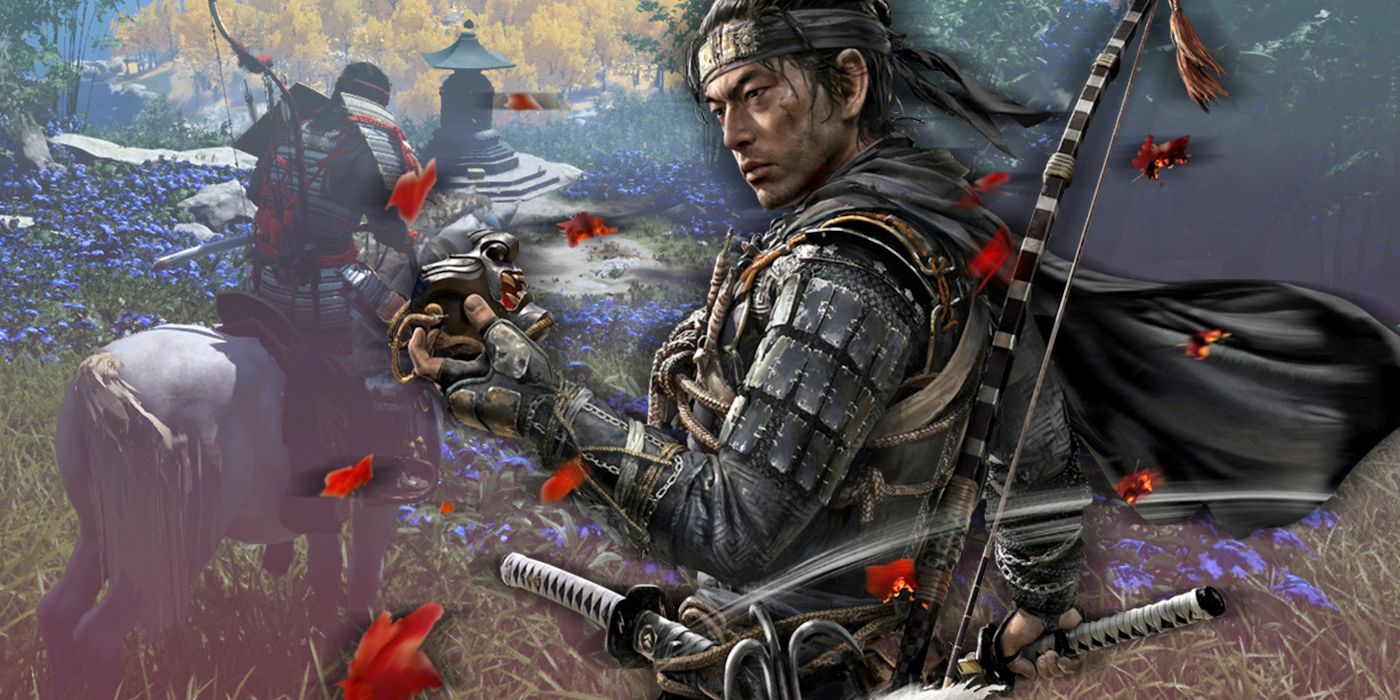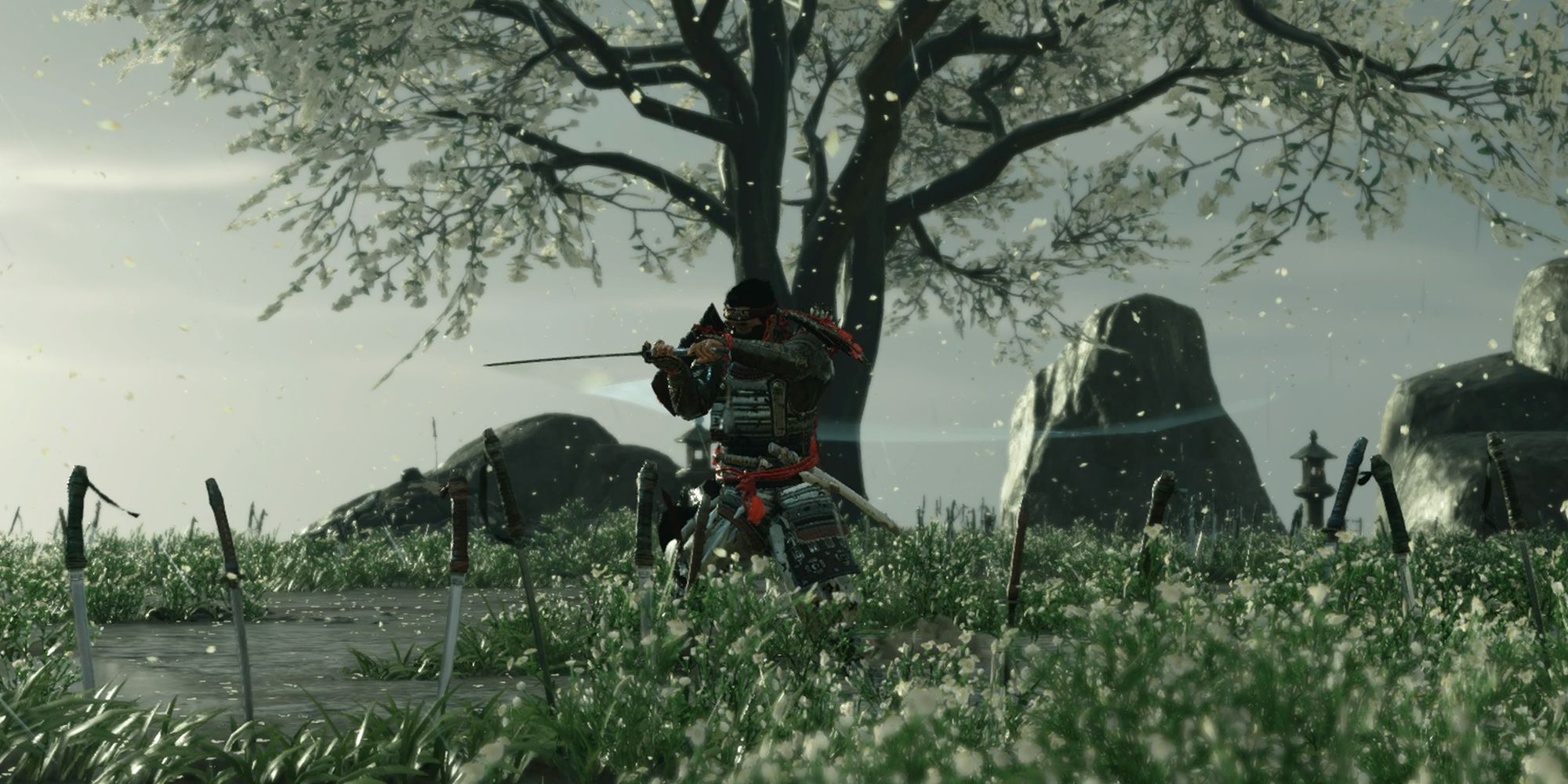Ghost of Tsushima was a huge hit when released last year and ended up being the perfect way to close out the PlayStation 4. The game featured a detailed and emotional story while also balancing stellar gameplay and a rich world. Since its release, the game has been praised for its beauty and has also gotten its real-life locations some much-needed attention. To this day, it is a fine example of the beauty in Japanese culture.
The game does its best to respect all aspects of Japanese culture, both past and present. The title itself is set in the backdrop of the real island of Tsushima, and while it is far less metropolitan than it is today, it still makes sure to acknowledge the important areas. These areas also include some historical landmarks like the Torii Gates. The title also notes flora and fauna in the game and consistently has players riding through tall grass or having battles surrounded by color like in the "Duel Under Autumn Leaves."
However, the environment isn't the only beautiful aspect of Japan that the game makes a note of. Equally as important is the game's spirituality and its utilization while paying proper respects to the culture. Throughout the game, players can walk through Torii Gates and pay respects to a temple. Players will typically receive a reward and a beautiful view. However, in the Legends multiplayer mode, players are taken to the purely spiritual side of things and come face to face with Oni and various other spirits. The game mode reveals what it is like to have superpowers in the game and shows a glimpse at how Japanese culture viewers the afterlife.
Foxes are also utilized ingeniously by leading the player to a small shrine that they can pay respects to. In Japan, Foxes are called Kitsune and are perceived as messengers. Leading Jin Sakai to a shrine is a perfect allusion to that. Haikus also share in the game's beauty and culture as players find a location and create their own short poems. Haikus originated in Japan and is a chance for a person to find a deeper meaning to the world. Their inclusion wasn't necessary but helped add to the overall immersion.
The clothing in Ghost of Tsushima also plays an important role in Japanese culture as each article and accessory has a meaning, even the katana. The game offers a wide variety of outfits and swords acquired through various quests and hidden areas. It's a small touch to the game, but it offers more depth and, mechanically, ensures that a player becomes stronger thanks to charms that act as skills.
Ghost also features the darker side of certain customs that are typically found in honor and combat. Many duels vary in difficulty throughout the game but feature a one-on-one approach that shifts the camera angle and becomes fast-paced. These duels occur to maintain a swordsman's honor, something that Jin no longer believes in. This forces him to make hard choices and even kill people who could have lived a much longer life otherwise. It shows that there is a dark side to every culture and reminds the player that there is a reason certain aspects of these cultures arent as strong anymore.
Ghost of Tsushima is celebrated by many fans and honored by other game developers. It has set a standard for how games in a similar genre should be approached and exemplifies how hard work and time can pay off. Its attention to detail and respect for the Japanese culture has also made the game somewhat of an educational tool, giving players a loose look at how things could have been hundreds of years ago. A sequel hasn't been confirmed, but if the developers put in as much detail in their next title as they did this one, it will be another undeniable hit.



